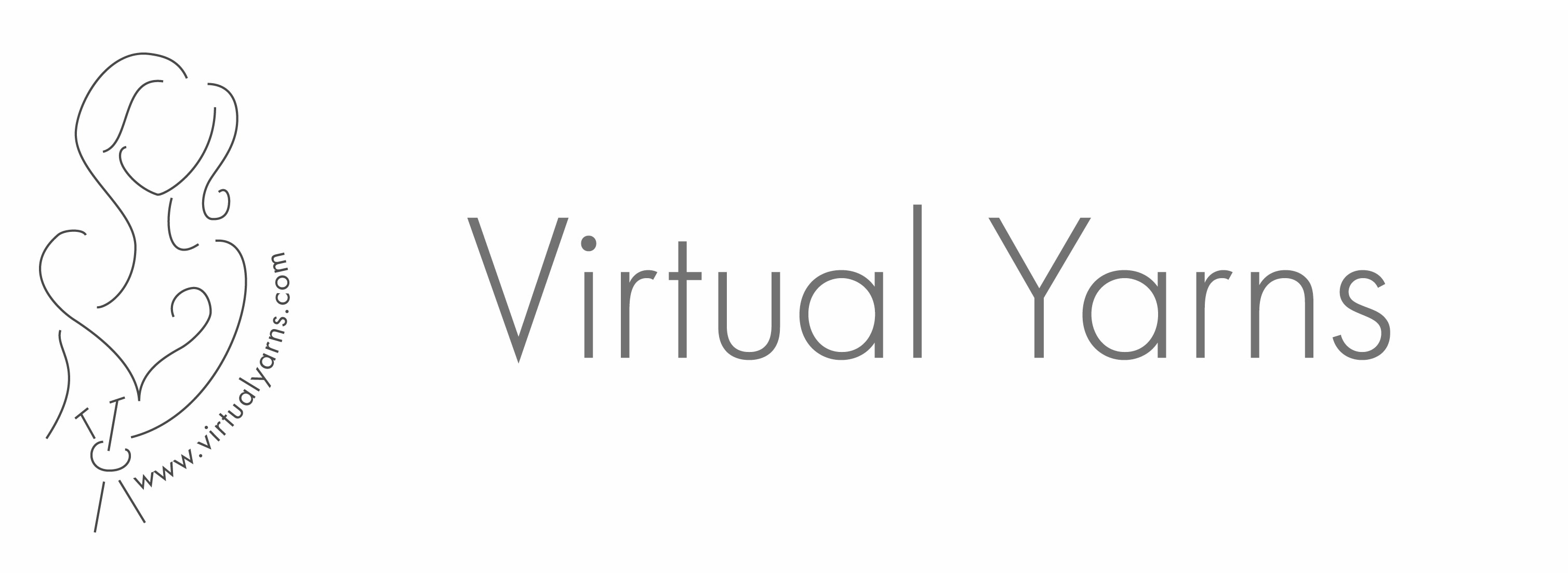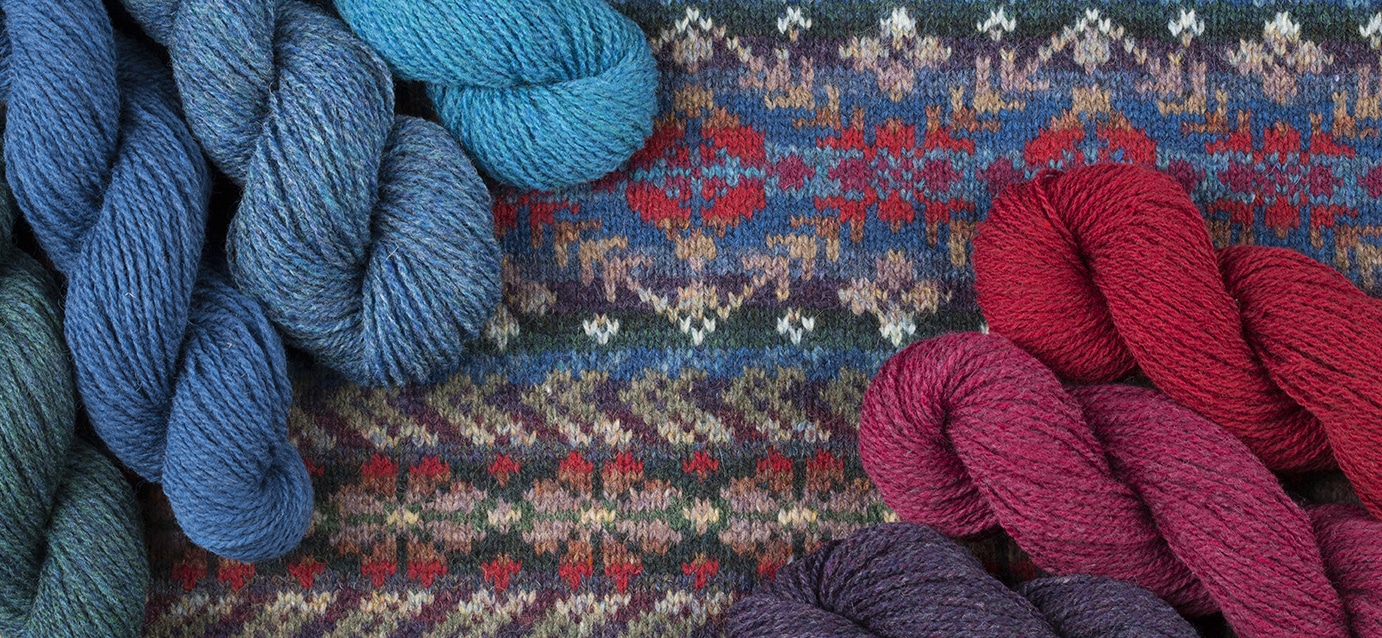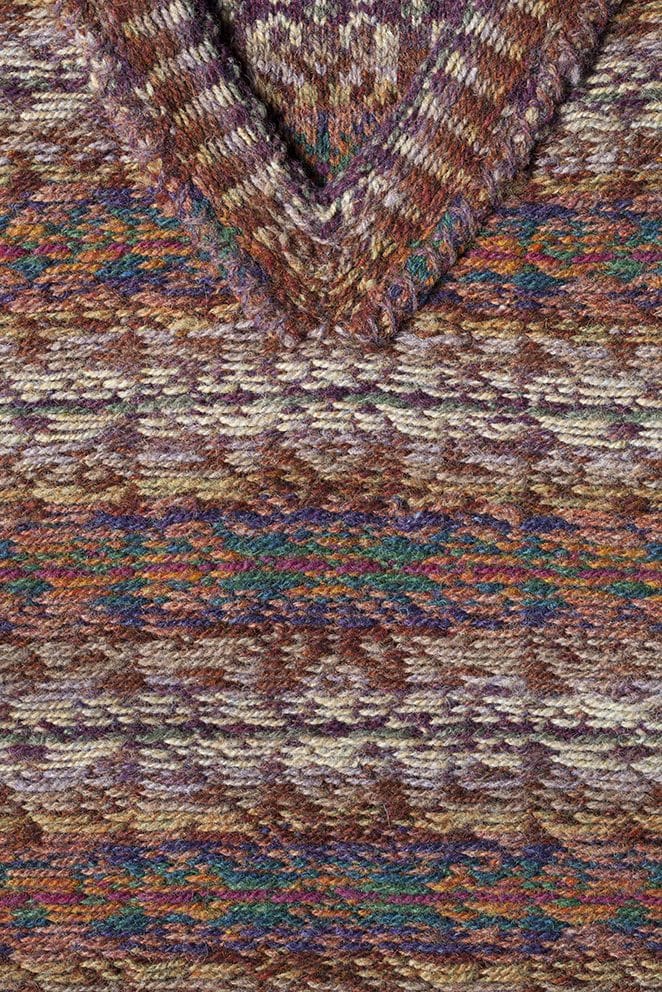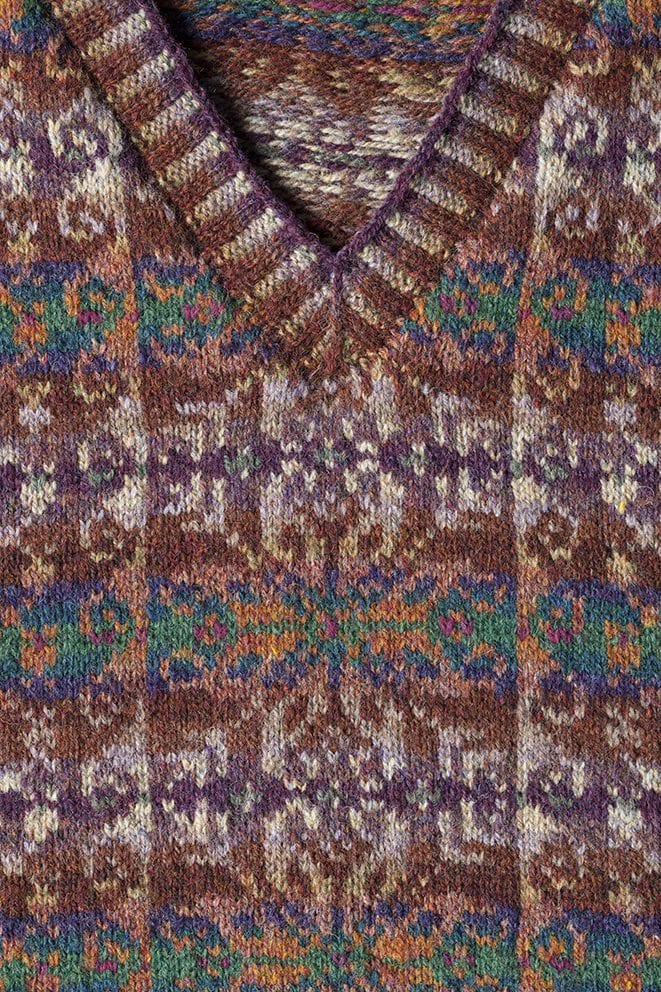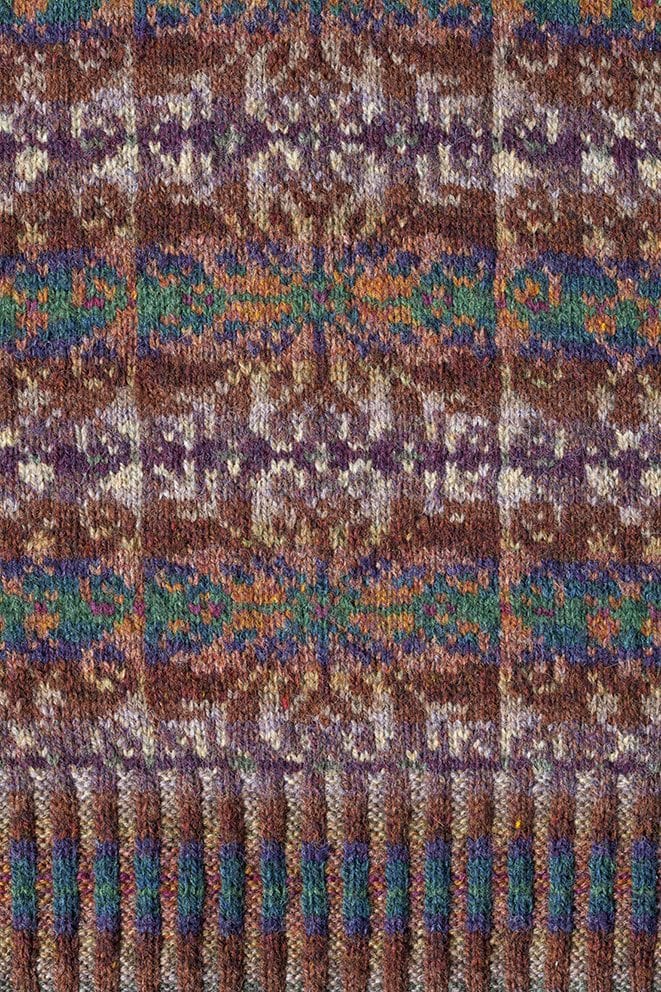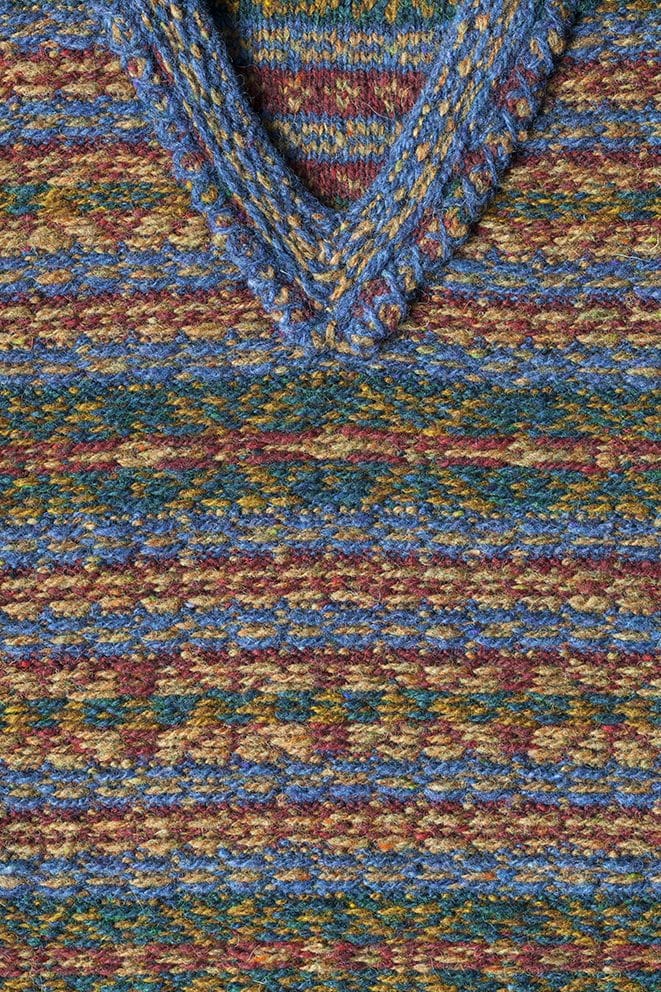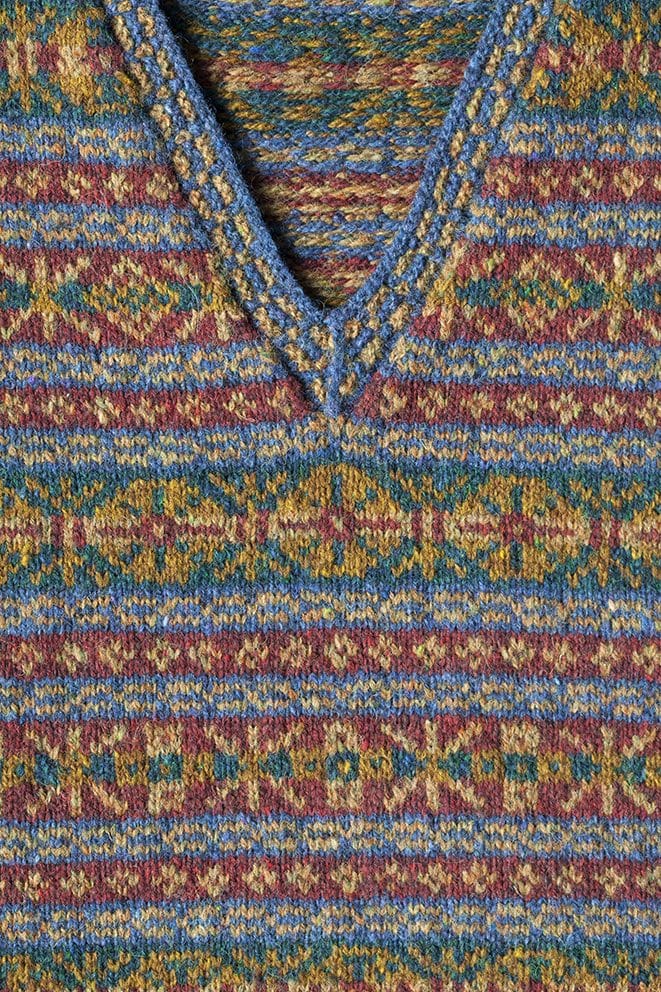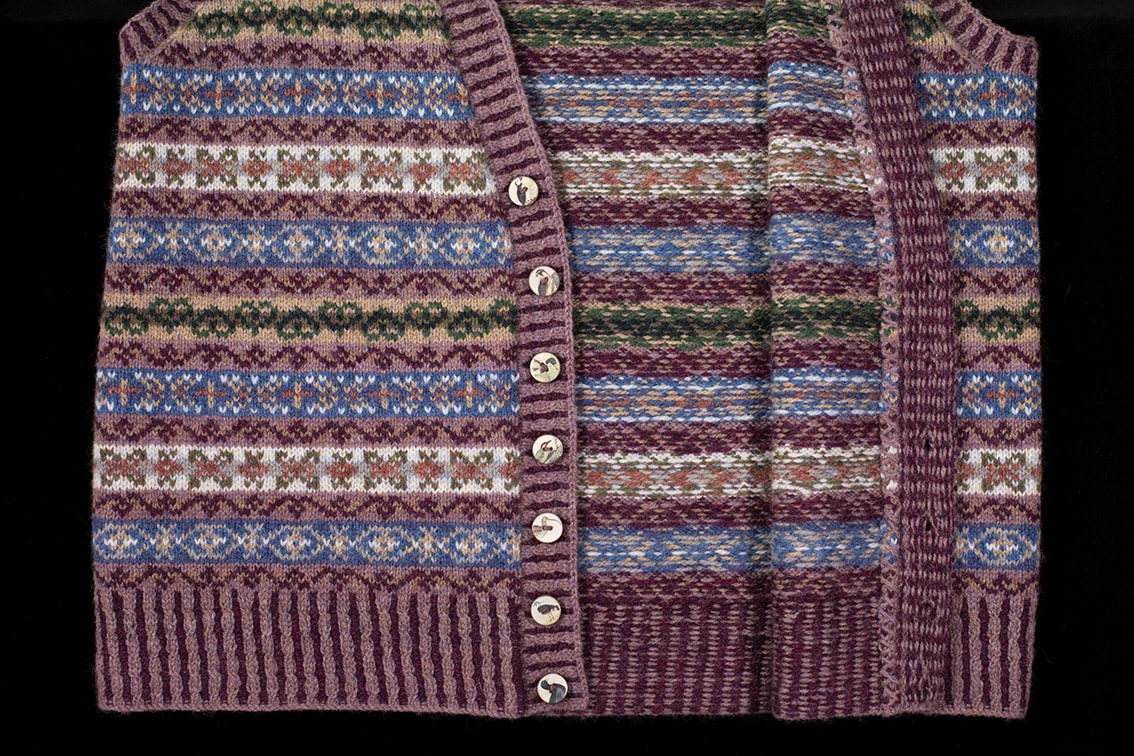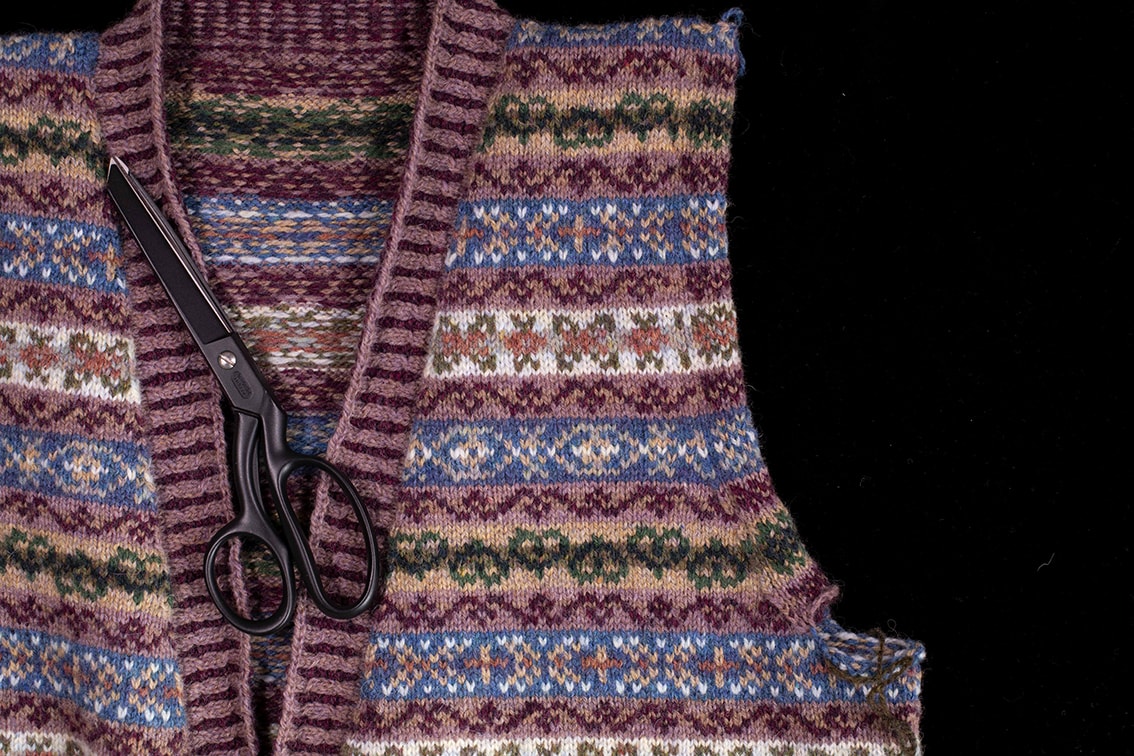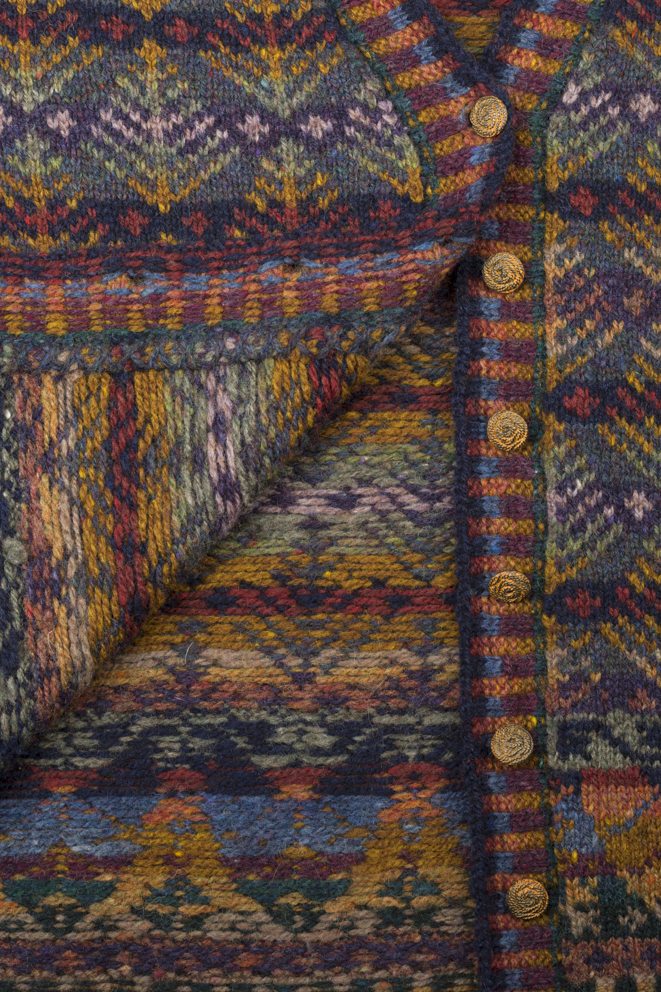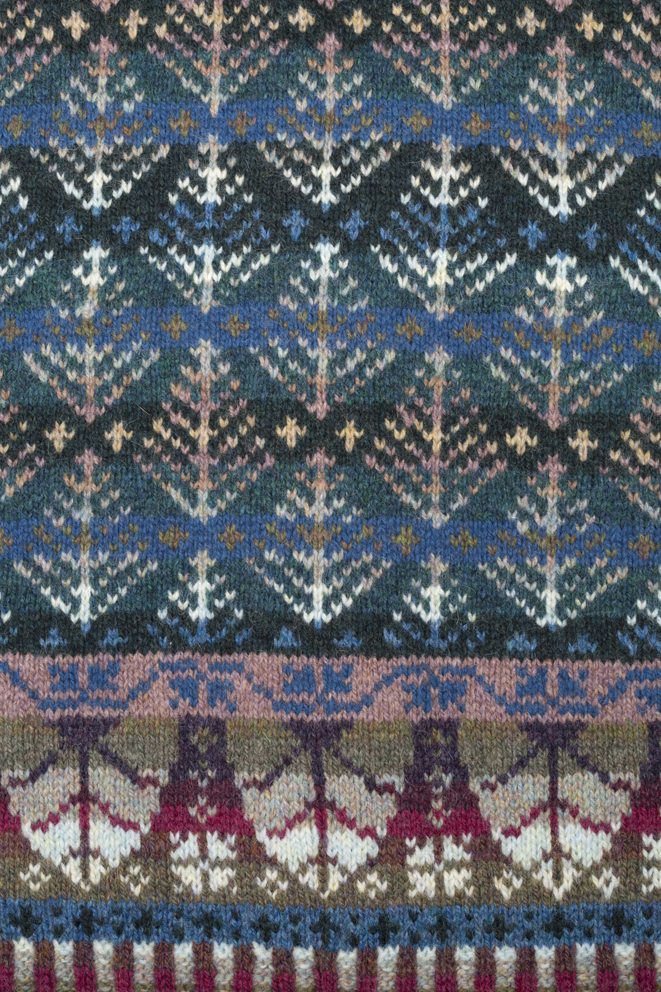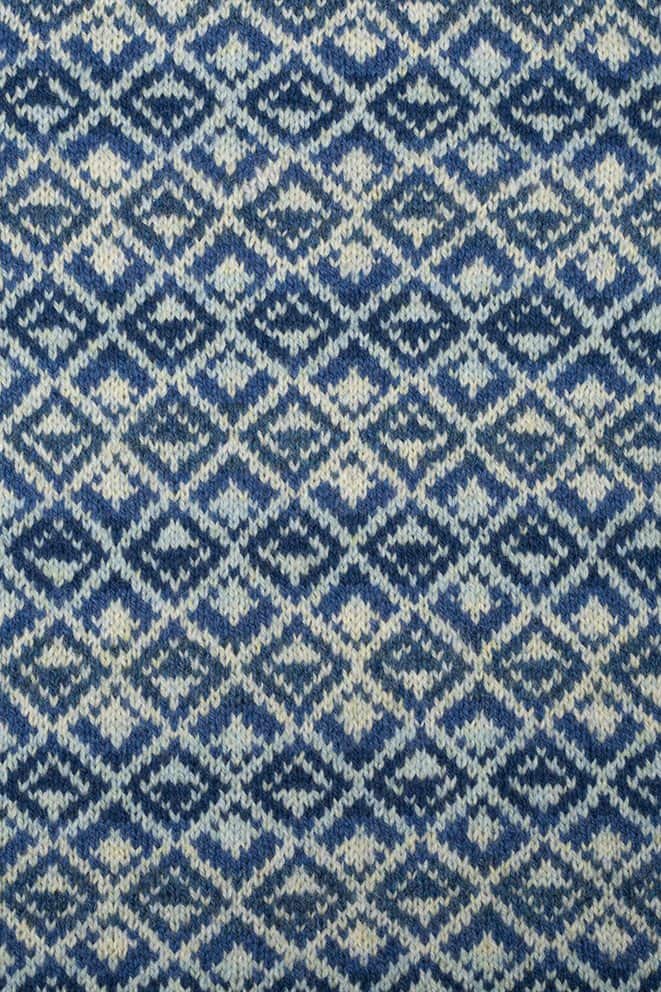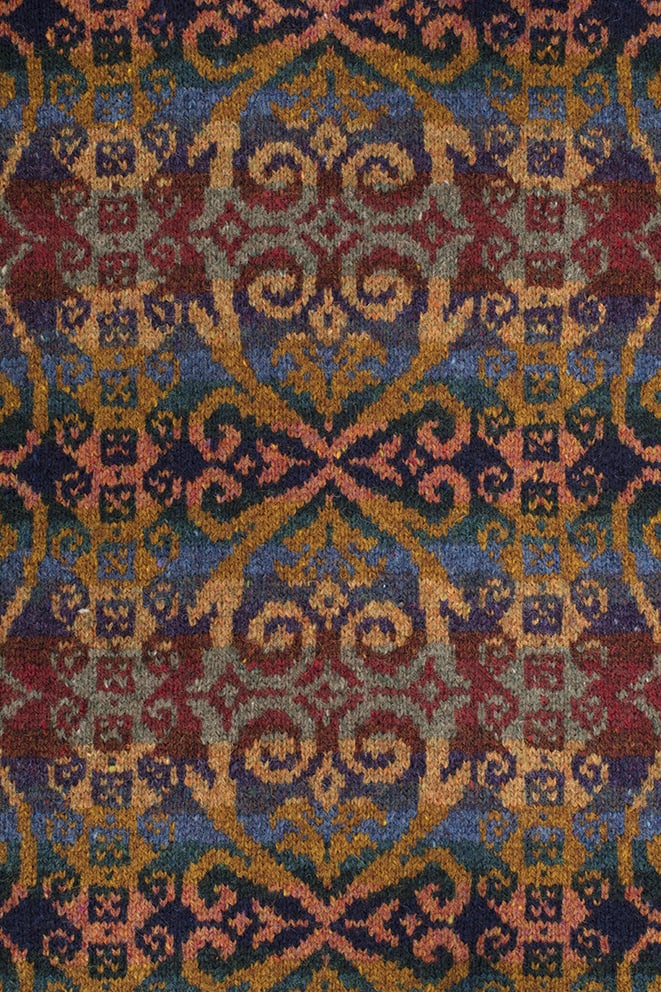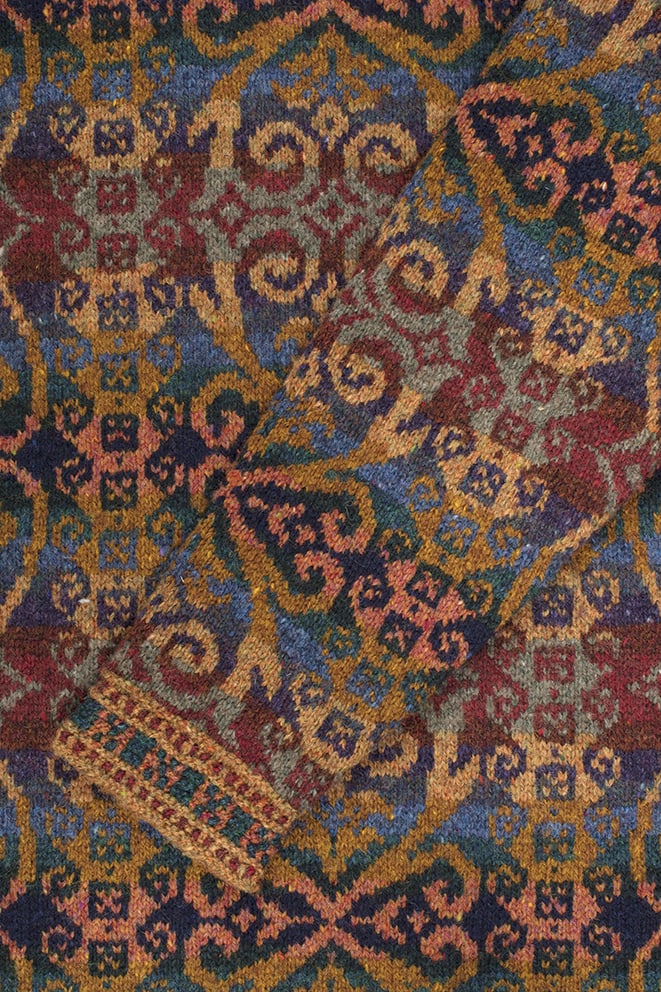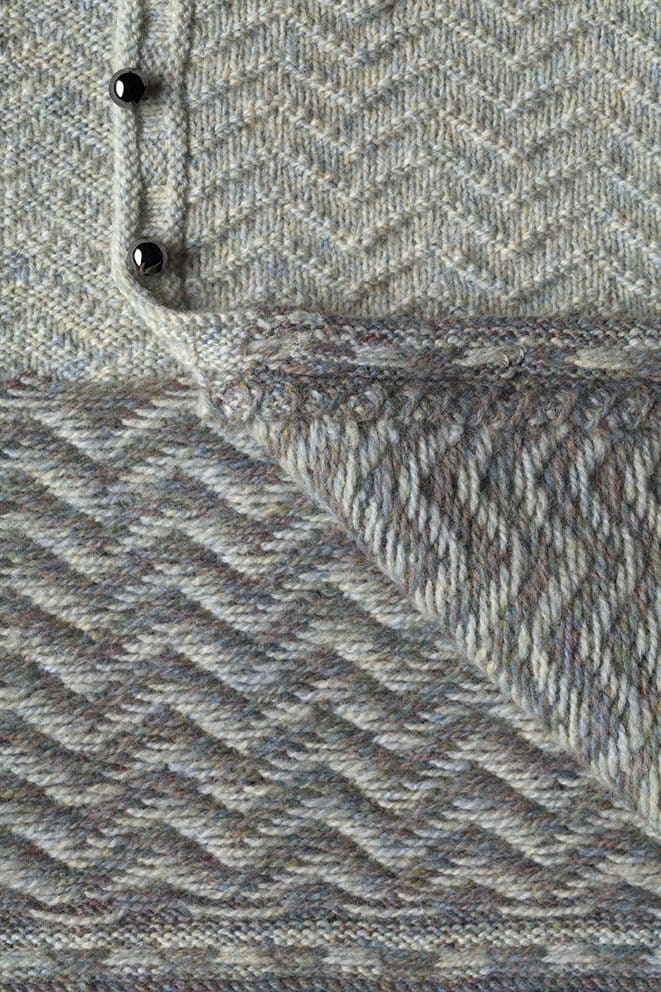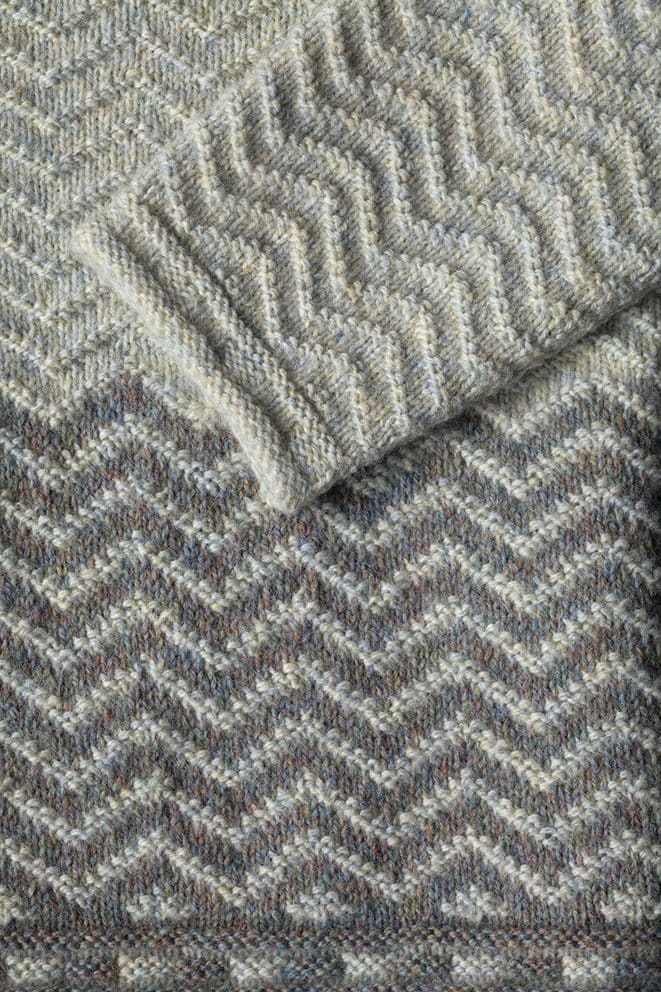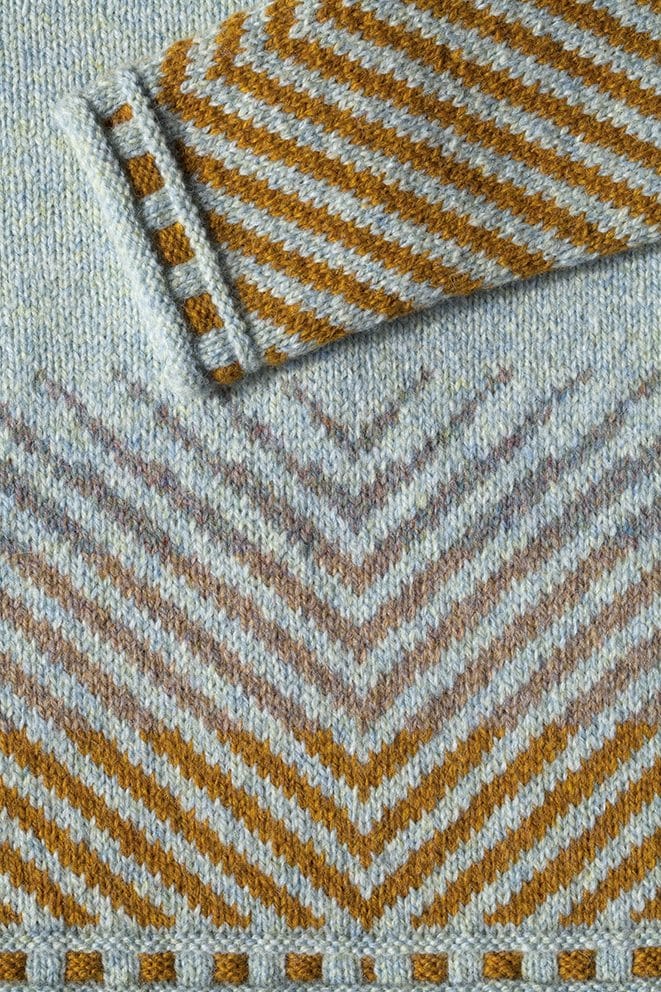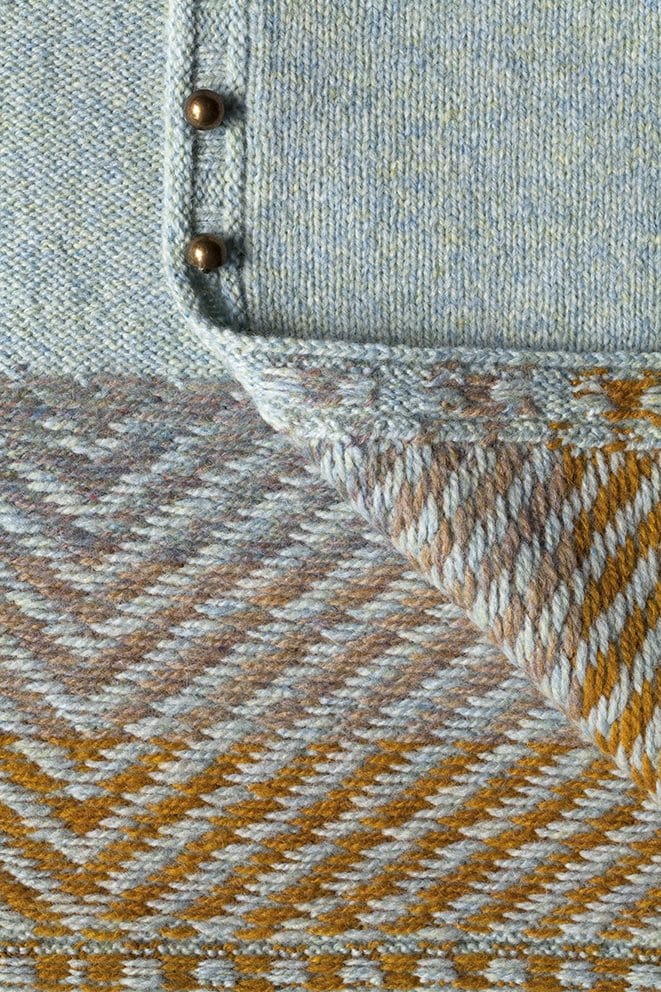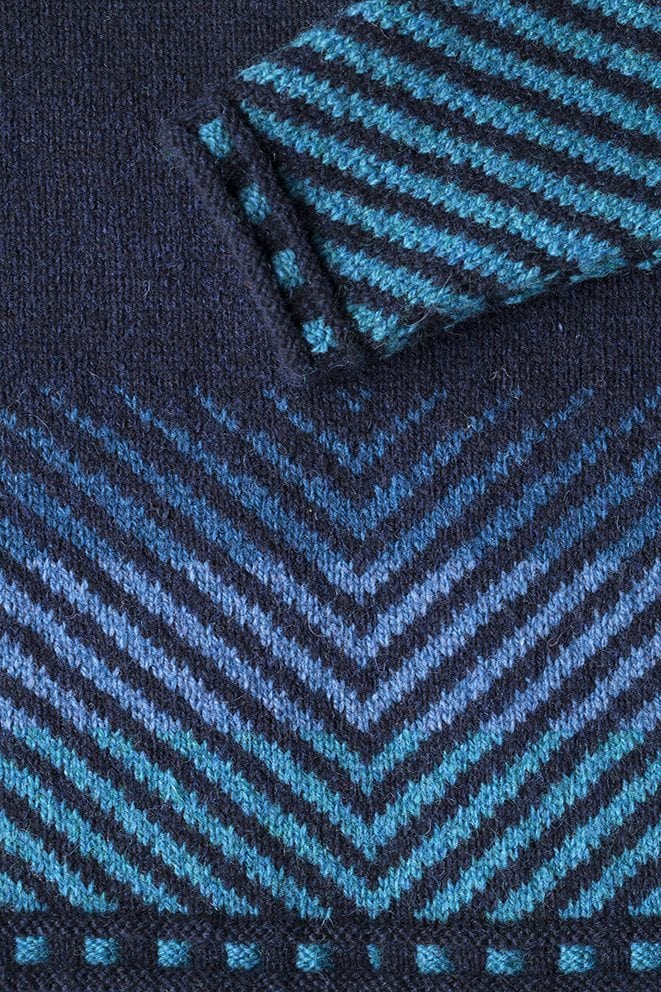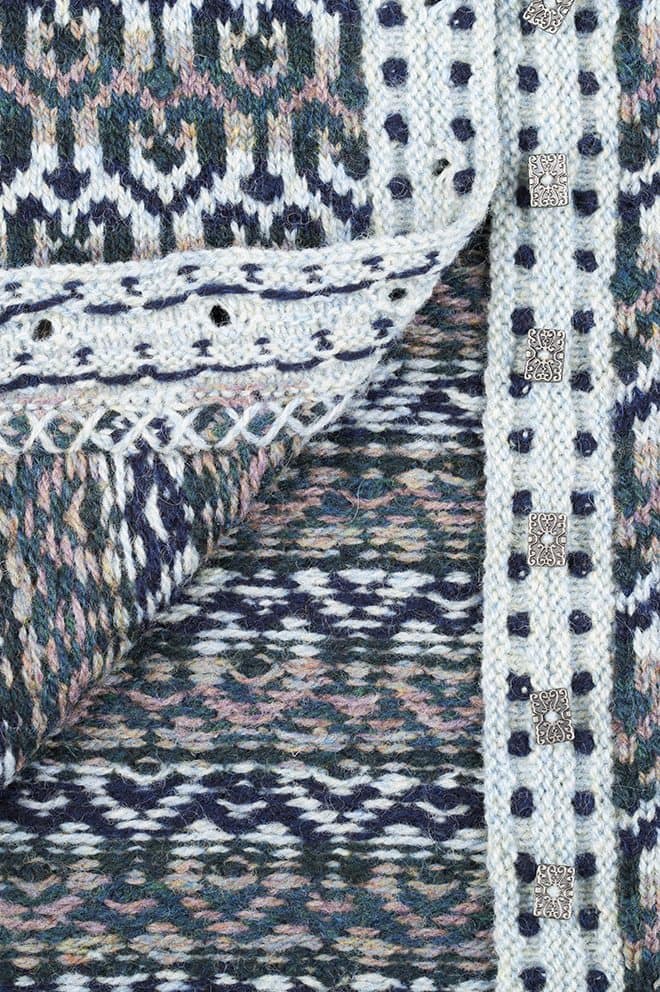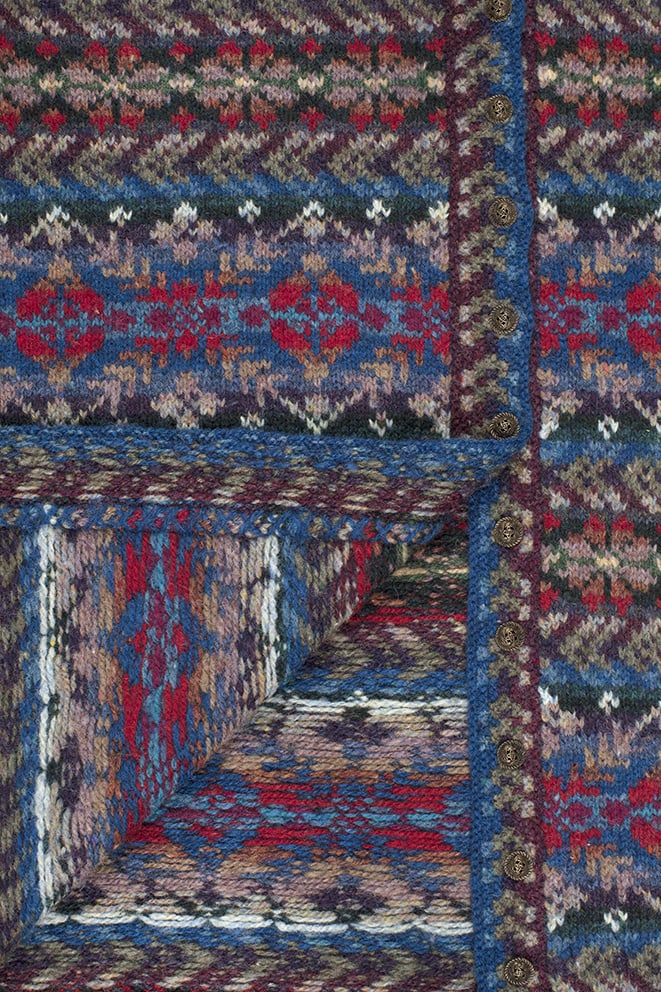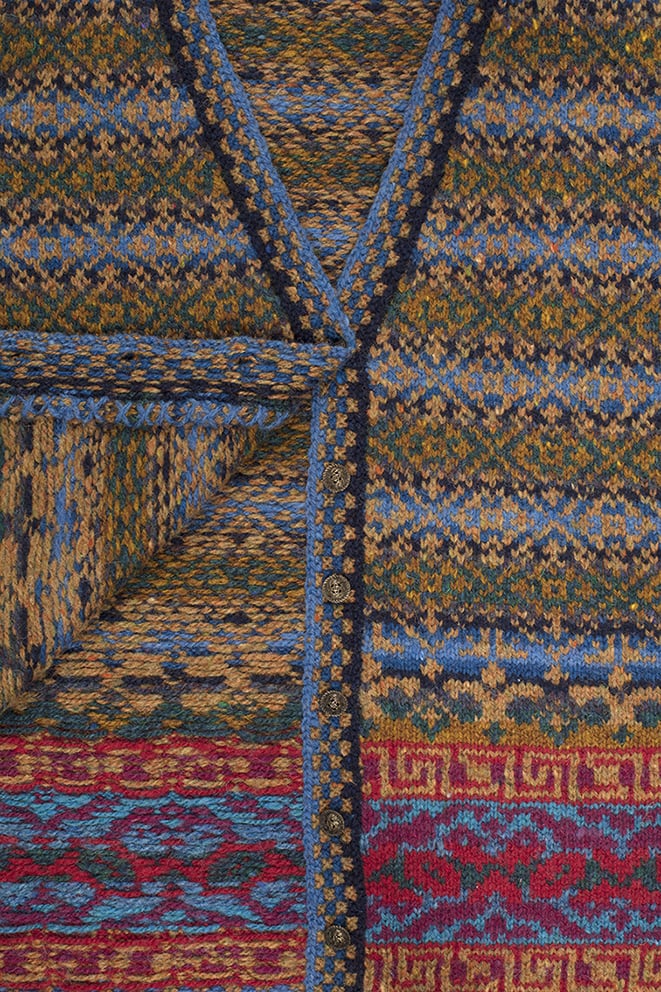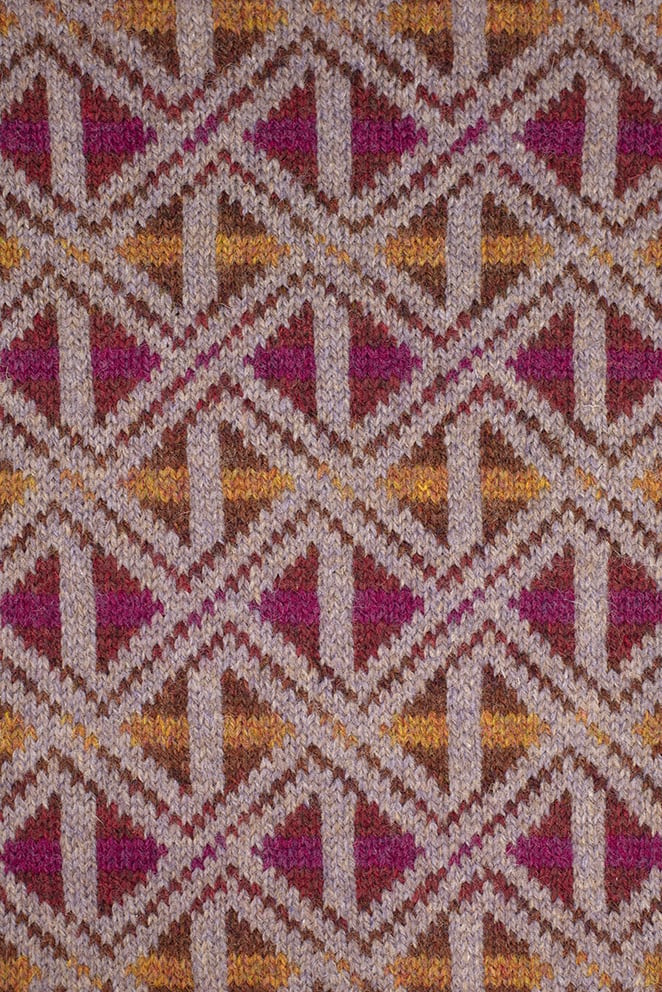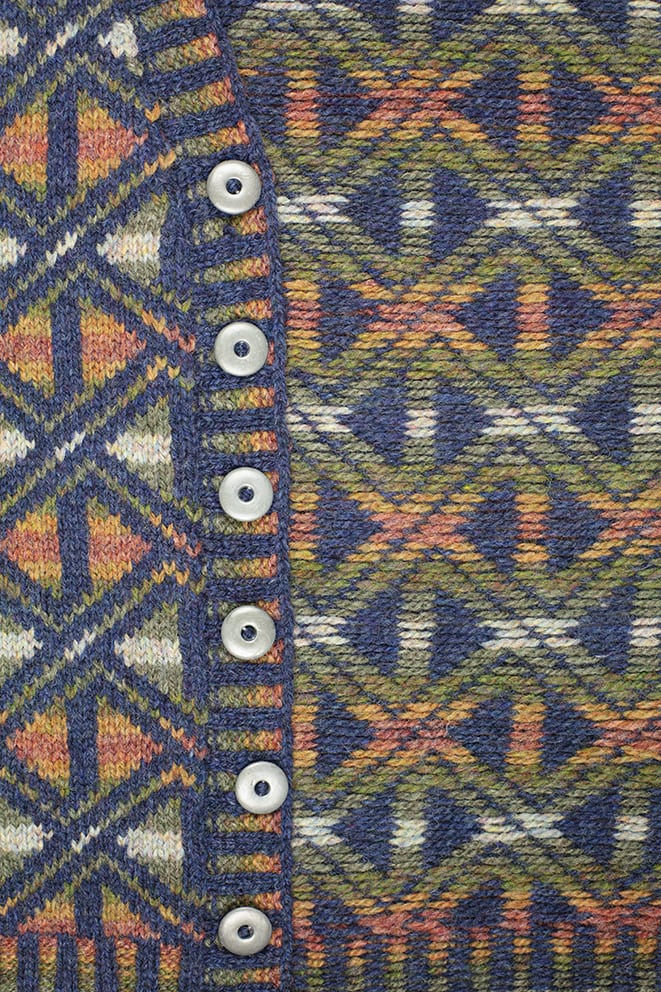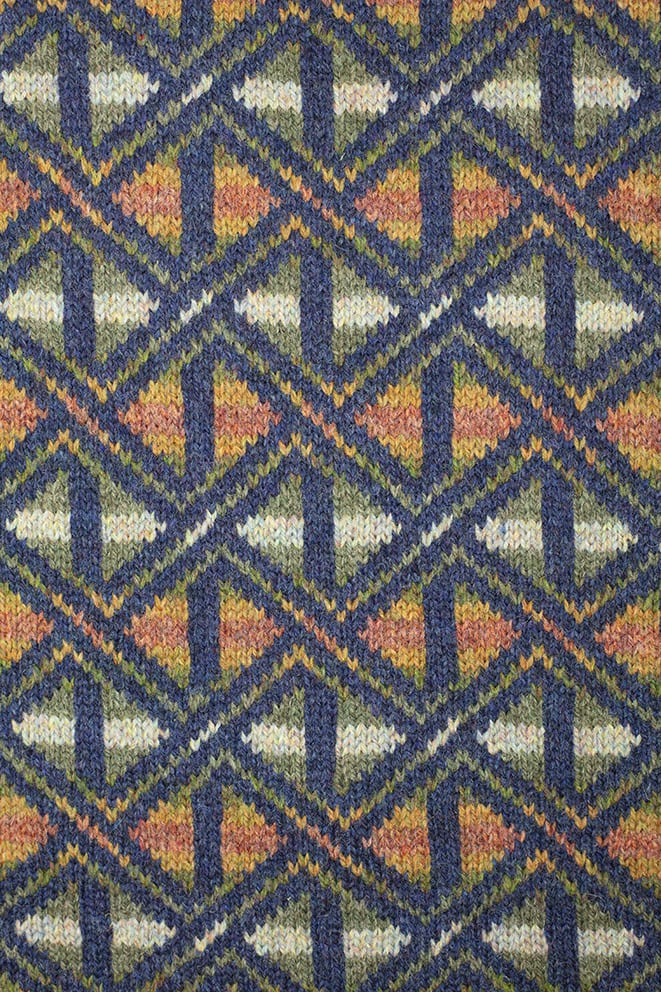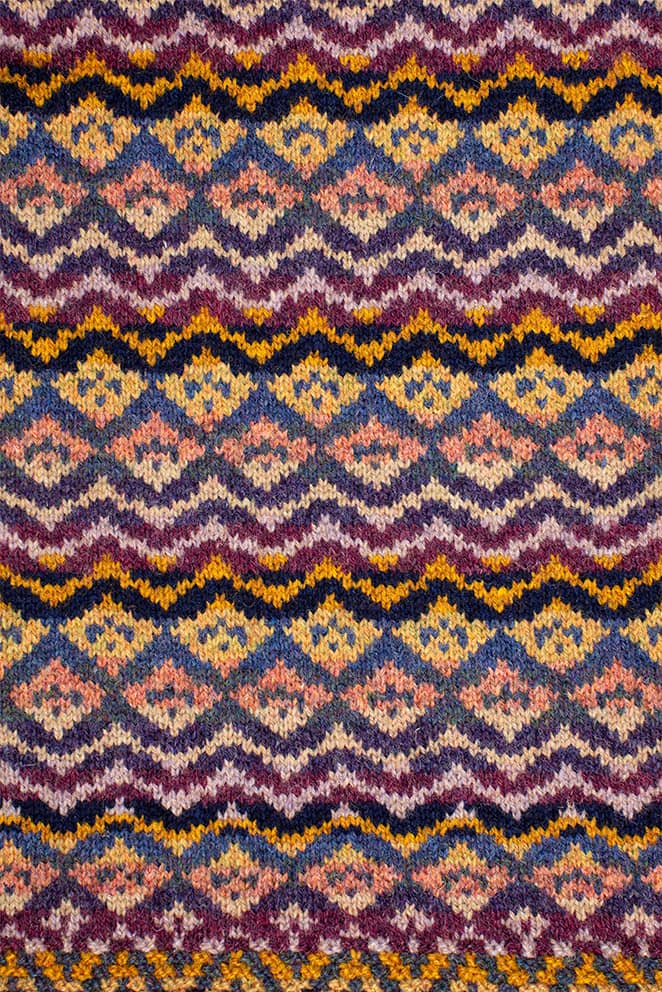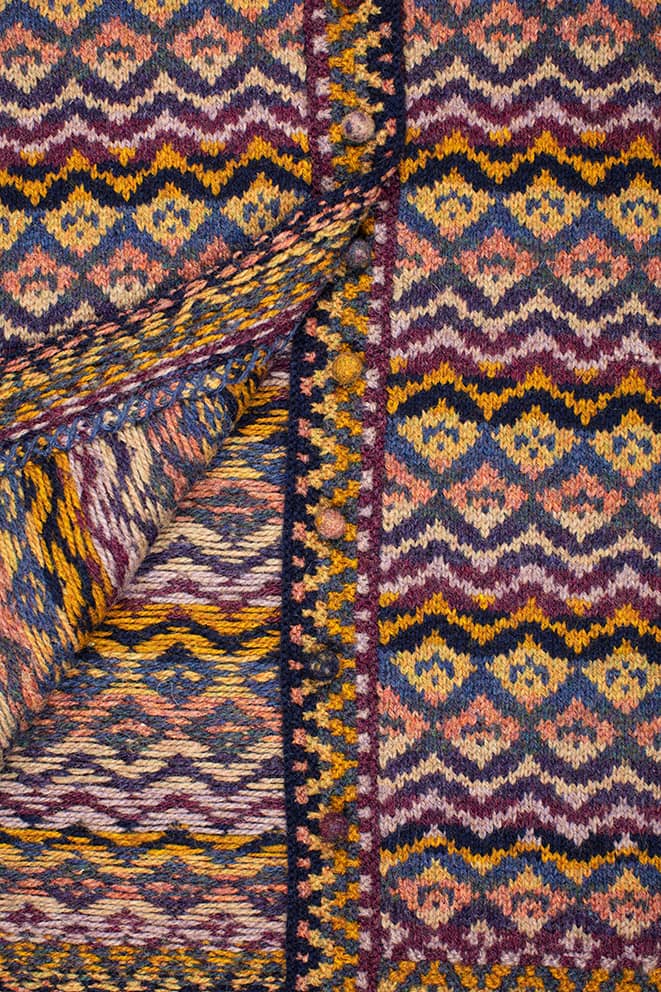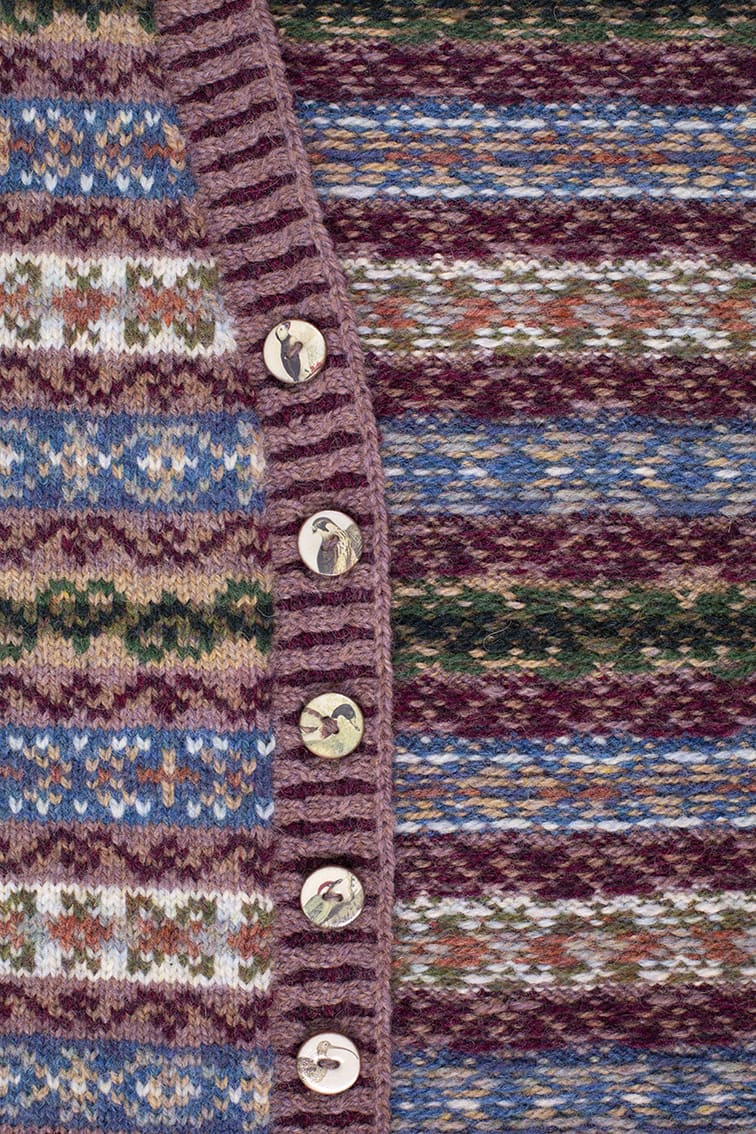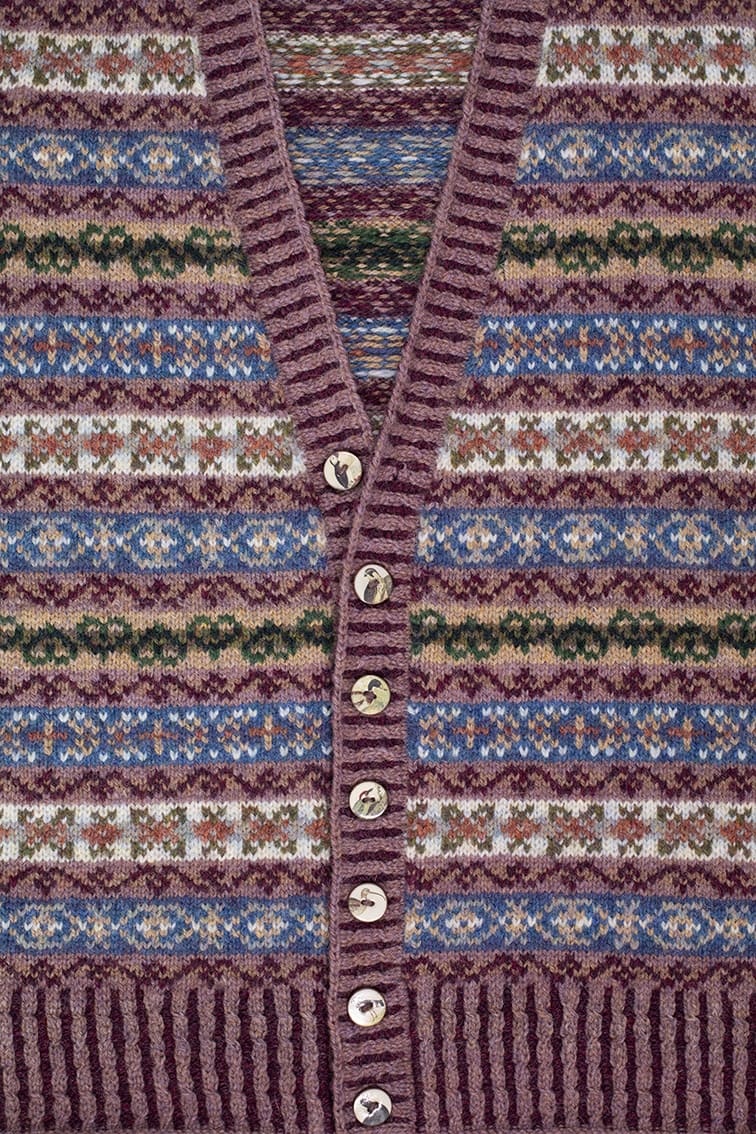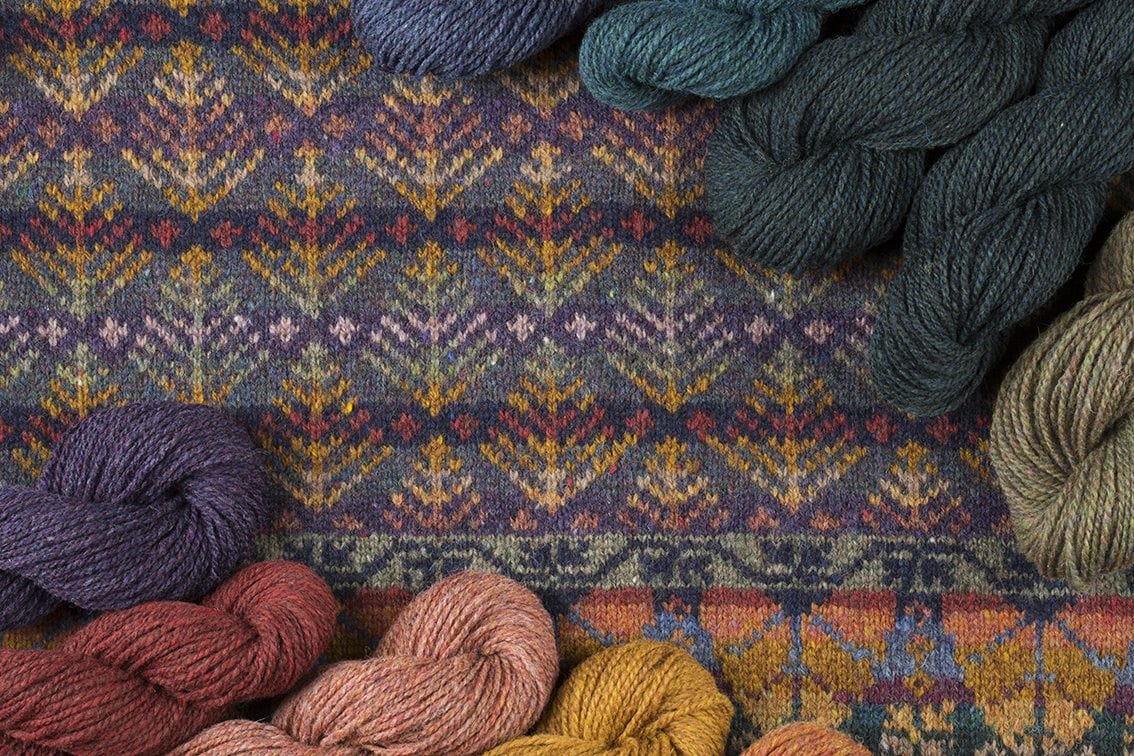Stranded Detail Gallery
We like to show our stranded patterncard designs in detail, inside and out. All of our studio garment detail and yarn images are shot using archival photographic techniques to ensure they are stitch sharp, evenly lit and colour accurate. You can find these images throughout our product pages, but we have also gathered some here to show our yarns and designs knitted-up and finished. If you are new to the stranded technique it is always helpful to see images of finished garments in detail, as a reference point to help build your own knitting skills.
Thoroughbred Vest and Roscalie Vest both have a v-neck which requires sharp shaping in both the armholes and the neckband. You can clearly see the centre front neckband stitch; decreases are worked on either side of this stitch to give a neat, angled neckband.
The Peigi Waistcoat has a much deeper, softer v-neck, and because it is open up the front the neckband and front bands are picked up and worked together as one long border.
The mood of a garment changes completely with a different colourway. Oregon is one of our most versatile designs, and not only comes in both Spring and Autumn colourways, but also as a cardigan, waistcoat or hat set.
Even when the background colours remain the same, a change in pattern colours produces a dramatic difference. Delta cardigan in Sand colourway has a soft, subtle, pearl-like appearance, whereas the Sea colourway gives a much stronger contrast.
The Henry VIII pullover has large-scale, complex vertical panels which flow up the garment and create a striking appearance.
Stranded designs are usually knitted in the round as that is the most practical and comfortable method of knitting with two colours at one time. However, occasionally there are exceptions. Sheshader is knitted in the round for the lower two-colour part of the garment, and from then on the steek is cast off and the upper part is knitted back and forth in rows.
The Tràigh cardigan is also knitted back and forth in rows because the pattern is graphic enough to follow on both the right and wrong side of the garment.
If you have never knitted a steek before, the idea of cutting your knitting can be daunting. However, as these images show, once a steek knitted in our Hebridean yarn is trimmed to a 2 stitch width and cross-stitched neatly in place, it will hold firm for the lifetime of the garment.
The most important thing about stranded knitting is to knit evenly to the correct tension. It doesn't matter what method you use to achieve this (knitting with a colour in both hands; dropping and picking up; circular needles or double-pointed) or how fast a knitter you are. As long as the method you choose is comfortable and gives you the best result, you are going in the right direction.
As these images show, stranded knitting should be even and flat on the right and wrong side. Strands should not be too loose or too tight or you will have a baggy or bumpy finish. For stretches of up to 8 stitches in one colour you can let the strand sit neatly across the back – you only have to weave-in on stretches of more than 8 stitches. Weaving-in on shorter stretches is unnecessary and can spoil your finish. The strands should allow you to be able to see the pattern reflected in reverse on the wrong side of the garment, and if your strands are even they will not pull or drag.
